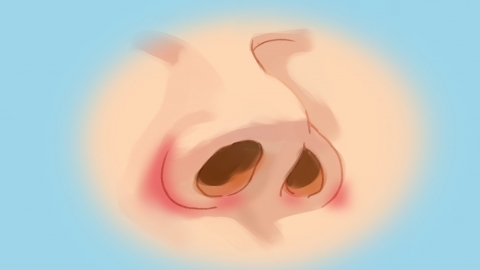What causes pimples to always appear on the nose?
Generally speaking, pimples refer to acne. Persistent acne on the nose may be caused by unhealthy lifestyle habits, dietary factors, seborrheic dermatitis, rosacea, vestibular rhinitis, and other conditions. It is recommended to seek timely medical consultation and follow professional guidance for treatment. Detailed explanations are as follows:

1. Unhealthy Lifestyle Habits
Long-term late-night habits can disrupt the body's biological clock and affect the endocrine system, leading to hormonal imbalances and abnormal sebaceous gland secretion. Additionally, chronic mental stress can also cause endocrine disorders, making the nose area more prone to acne. It is important to develop regular sleep patterns, ensure 7-8 hours of sleep each night, and learn to relieve mental stress through activities such as exercise and meditation.
2. Dietary Factors
Consuming large amounts of spicy, greasy, and high-sugar foods over a long period can stimulate sebaceous glands, increasing skin oil production. This may also affect gastrointestinal function, causing indigestion and toxin accumulation in the body, which can trigger acne on the nose. Adjusting dietary patterns to include more light meals and foods rich in dietary fiber is recommended.
3. Seborrheic Dermatitis
Seborrheic dermatitis is often associated with excessive sebaceous gland secretion and Malassezia infection. Overproduction of skin oil and excessive proliferation of Malassezia can lead to free fatty acid production through lipid breakdown, irritating the skin and causing inflammation, thereby resulting in acne-like lesions on the nose. It may also be accompanied by symptoms such as skin redness, itching, and flaking. Patients may use medications such as tacrolimus ointment, bifonazole cream, and ciclopirox cream under a doctor's guidance.
4. Rosacea
Rosacea may be related to genetic factors and abnormal neurovascular regulation. Vascular dilation and inflammatory responses in the nose can cause skin papules and pustules resembling acne. Symptoms such as facial flushing, burning sensation, and stinging may also occur. Patients should follow medical advice to use medications such as metronidazole gel, doxycycline enteric-coated capsules, and brimonidine tartrate gel for treatment.
5. Vestibular Rhinitis
Vestibular rhinitis is often caused by increased nasal secretions and bad habits such as nose picking. Nasal secretions may irritate the skin of the nasal vestibule, or skin damage from nose picking can lead to inflammation, causing acne-like boils in the nasal vestibule area. It may also be accompanied by pain, dryness, and other symptoms in the nasal vestibule. Patients may use medications such as erythromycin ointment, fusidic acid cream, and mupirocin ointment under medical advice.
In daily life, maintaining facial cleanliness is important. Use a gentle facial cleanser daily, but avoid over-cleansing. Keep the indoor environment clean and dry, and change bedding regularly.









